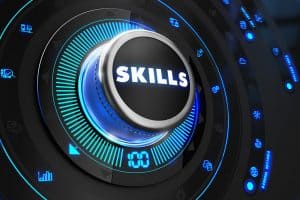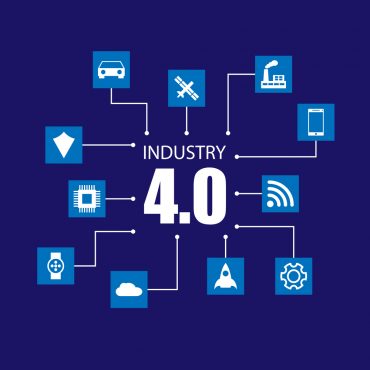
Building teams with critical non-technical skills to amplify your cloud implementation.
Everywhere you look, there are educational resources to help people acquire cloud skills. The technical ones, that is. From online universities to the cloud providers themselves, almost anyone can easily acquire the latest cloud technical skills. DevOps, containers, security, JavaScript and Python, platform expertise—you name it, you can find it. What you won’t find much of is training in the soft skills that are arguably the most important aspect of designing, deploying, and managing a cloud ecosystem.
In large part, that’s because so much of the focus of any cloud implementation is on technology. But that narrow lens is where many cloud journeys take a wrong turn. Why? Because, often, technology is actually the “easy” part of cloud. It’s getting the right people, with the right mix of soft skills—and putting those skills to work effectively—that’s hard.
Soft skills: the critical components of cloud success
Cloud soft skills are really human-being skills, and they are just as valuable to the success of a cloud deployment as technical skills. They’re also tangible; you can recruit for them, and you can help people acquire them. Key cloud soft skills include curiosity and the ability to learn, a collaborative mindset, systems thinking, and flexibility.
Curiosity and ability to learn
Members of cloud teams must know their own jobs, but they must also be willing to learn about the jobs of those around them. Team members should be T-shaped; their knowledge should be deep in their own domain—say network architecture—but they should also have some understanding of the domains of other team members. So, for example, the team’s network architects should also develop a working understanding of DevOps, security, QA, etc. Thus, the teams become T-shaped teams where knowledge is shared, and the team succeeds because people are willing to get out of their comfort zone and learn new things.
Collaborative, product-based mindset
Just as important as the ability to learn is the willingness to collaborate to make the cloud journey a success. A big part of this collaborative mindset is a shift from a “project” to a “product” mentality. Traditional IT functions with a project mentality where everyone has individual, specific tasks and milestones to meet, and they aren’t necessarily concerned with the tasks and milestones of other workers on the project. Cloud doesn’t work that way. The pace of development and change is too fast.
So, it’s critical to shift from a project to a product mentality where everyone “owns” everything, e.g., everyone on the team owns security, and everyone owns high availability. Indeed, achieving cloud success requires a sense that everyone is working together in a fully joint effort to deliver a high-quality product, not just slog through project milestones.
Systems thinking
The ability to see the big picture—systems thinking—is also a critical cloud soft skill. To engage in systems thinking, everyone—from security people to server people to architects—must abstract themselves from their siloed task sets and think in terms of a system, of an end-to-end solution. That’s where building those T-shaped teams we talked about before really pays off.
For example, let’s say you’re building an application that requires AI/ML knowledge. On a T-shaped team, you would recruit a team member with in-depth AI/ML skills but who also understands how cloud works overall, end-to-end. So, the team—via this member—will learn enough about AI/ML to help them do their part to build the product, and the AI/ML person will know enough about how cloud works to build the AI/ML functionality to suit the cloud application.
Flexibility
Flexibility is another critical cloud soft skill—especially in cloud operations. Post-release, cloud applications require extensive, ongoing support. Cloud team members must be able to understand and adapt to constant changes—both in cloud features and business needs. That flexibility must also be executed at speed.
With a SaaS solution for HR, for instance, vendors might provide incremental updates, as well as twice-yearly updates with potentially thousands of new features. What’s more, there’s typically only a five-to-six-week adoption period to absorb those changes and apply them to the business.
For example, a new update from your SaaS HR vendor may change how compensation and benefits are delivered to end users or, for open enrollment, how the enrollment process is executed. The operations team must be adaptable enough to quickly ascertain how to configure the solution to accommodate the new features and seamlessly deliver them to end users.
Alignment—one key to making soft skills work
Soft skills are critical to cloud success. However, soft skills don’t function in a vacuum. If the organization’s goals for cloud aren’t aligned across the enterprise, the cloud investment will most likely not deliver on its promised benefits.
Overcoming resistance is key to alignment. Everyone should understand the “why” of the cloud journey, and goals should be shared across the enterprise. Every business function will have needs that must be met, and individual function goals might conflict. Therefore, each business function should have its voice heard equally so that goals can be aligned—and stay aligned through the cloud journey. Otherwise, bottlenecks will multiply like mushrooms, and functional infighting will rule the day.
Finding the right skills mix for success
Finding the right mix of soft skills may be difficult, but it’s doable. If you’re like most organizations, you already have people who possess many essential soft skills but, due to traditional siloed environments, haven’t had many chances to use them. However, when you make the effort to shift to a product mindset and assemble T-shaped teams, any skills gaps that do exist will quickly become apparent.
On any cloud implementation, you’ll most likely have many people who’ve never had to sit next to each other and don’t understand and appreciate other areas of expertise but who need to suddenly work together. They’ll need to function as a cohesive whole, and that might be hard for some of them, so it’s essential to prioritize filling soft-skills gaps.
One critical component to building and reinforcing soft skills is to set the tone from the top. It’s essential for leadership to level set from the beginning. Make the benefits clear, and make the expectations of teamwork, collaboration, and flexibility clear, as well. And remember, in that messaging, you’re not just training IT teams either. Everyone will be impacted by cloud, so it’s essential to educate business people who are going to use the applications on the basics of cloud and why the organization has adopted it.
But for the IT people, a great way to acquire new concepts—and that includes soft skills—is through immersive learning. To that end, the concept of dojos is gaining traction at many companies. Dojos are immersive learning exercises where team members are actually learning on their sprints. In the dojo, people are being taught technical concepts while they’re delivering on their sprints, but they’re also learning how to function as a team, building empathy for other team members, and breaking down silos along the way.
Tech is easy; people are hard, but they’re worth it
No cloud journey is easy. Most organizations will have to navigate a series of complex technical decisions to design, build, and implement their optimal cloud environment—and sustain it long-term in a constantly changing environment. For many of those organizations, the technical piece will also be the (relatively) simple part. Putting the right teams—with the right mix of soft skills to make the journey a success—in place will be the hard part.
It won’t be easy to create cloud teams with the right mix of soft skills, but it can be done. Leadership will have to change their mindset and be willing to model the soft skills they seek in their people. The organization, in its entirety, must also learn to think differently. Everyone, from the top down, must have the same goals. Workers must be willing to be exposed to different types of people—and be willing to work collaboratively, as a team, to achieve collective goals. If they do, the road to cloud can be a lot less bumpy.





























